#common acorn barnacle
Text

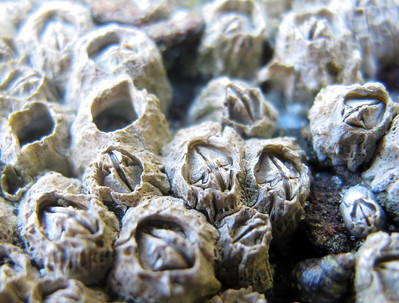

Common Acorn Barnacles on Call
Semibalanus balanoides, more commonly known as the common acorn barnacle or the northern acorn barnacle, is a widespread species of barnacle found all along the Pacific and Atlantic coasts of North America and the intertidal zone of Europe-- though it is notably absent from the Bay of Biscay. Its range is limited by the temperature of the water in which it breeds; in the winter, they require water as cold as 7.2 °C (45.0 °F), but throughout the rest of the year they can tolerate much warmer climates.
Like many barnacle species, S. balanoides is hermaphroditic, meaning it has both male and female reproductive organs. Once the water reaches the optimal temperature, typically in November or December, the barnacles begin to breed. An individual will reach out with a penis that can be up to 7.5 centimetres (3.0 in), and inseminate a nearby barnacle; this process may be repeated up to eight times between a single pair. After insemination, the penis disintegrates to be regrown the following year.
In the meantime, the fertilized barnacle will produce up to 10,000 eggs that are stored in a special sac within the shell cavity. The common acorn barnacle releases its eggs between February and April, in concert with warming waters and the spring algal bloom. The eggs then hatch into miniscule larvae, which spend several weeks feeding on plankton in the water column and going through a series of molts. Following the sixth molt, the larvae stops feeding and seeks out a suitable place on which to anchor itself. Once it has found a surface, the larval barnacle 'crawls' along the surface until it encounters one of its own species. At this point, they will attach themselves with a cement-like glue which is capable of supporting up to 3,200 kg (7,000 lbs) Here, a single northern acorn barnacle may live anywhere from one to seven years.
Adult S. balanoides are identified by the white, six-sided limestone casing with which they protect themselves. However, one unique feature of this species is the way in which they attach themselves to their chosen surfaces; unlike other barnacles, which have a hard calcified shell base, the northern acorn barnacle has a membranous base. Within their shells, they have rather soft bodies, including a set of feathered appendages called cirri with which they use to breathe and collect food.
The common acorn barnacle is a filter feeder, consuming microscopic plankton and bits of detritus from the water column. Though their hard shells deter most predators, adults are vulnerable to other predatory invertebrates like dogwelks, nudibranches, and sea stars, as well as fish like the shanny that are specialist feeders of barnacles.
Conservation status: The common acorn barnacle has not been assessed by the IUCN. The species is extremely common and very resilient, and in fact has been in existence since the Jurassic period. However, rising ocean temperatures may negatively affect their breeding period.
If you like what I do, consider leaving a tip or buying me a kofi!
Photos
Neil DeMaster
Oregon State Parks and Recreation
Kim Hanson via Wikimedia commons
#common acorn barnacle#Balanomorpha#Balanidae#acorn barnacles#barnacles#crustaceans#arthropods#marine arthropods#intertidal arthropods#coastal arthropods#atlantic ocean#pacific ocean#animal facts#biology#zoology
115 notes
·
View notes
Text
General Toon headcanons
I suddenly remembered that I made these
~~~~~~~~~~~~~
🥧Baby and child toons are scared of skelecogs. They see one and immediately start busting out crying
🥧 Toons born/raised in certain playgrounds have perks
🐾Toontown Central - Jack of trades, better at making friends and building relationships with others
🐾Barnacle Boatyard - Better swimmers and fishers
🐾Ye Olde Toontowne - Witches or other magic-related skills; like alchemy. Also, they prefer to make things by hand, very handy toons
🐾Daffodil Gardens - Gardeners, green thumbs, but also bug hunters and collectors
🐾Mezzo Melodyland - Musically inclined toons, they have sharper ears than most toons. Also artists like painters, sculpture, tailors misc
🐾The Brrrgh - Have better resistance to the cold. Has thicker fur.
🐾Acorn Acres - Certified tree climbers and foragers. Tree climbing-related activities are very common
🐾 Drowsy Dreamland - Due to the playground being what it is, they all benefit from the perks of having better sleep and often do have better sleep than the other toons from the other playgrounds (Unless you’re that one toon from that Graham task)
🥧Baby toon fur/ feathers/scales are much more lighter when very young (like infant to toddler), they reach their true colors around early childhood
🐾 Mother egg layers (like ducks, other birds, and gators) lay eggs (woah that's crazy), and also assuming that they take the same time as humans, they will hold the egg for about 9 months, lay it, and then take care of the egg for about a few days until it hatches.
🐾 Brand new baby toons (I have no idea what to call it, idk the actual name) look like their newborn for their species, usually small, blind/deaf, bald, pink crying jellybeans with limbs. In around the couple of weeks or a month mark, they actually look like proper toon babies. Yes, the toon parents will take many pictures when their baby starts to explode in fur/feathers because they look hilarious.
🥧Toons of different species can have a child together, the child will mainly be the species of their mother with some features of their father (think of the hybrids from Beastars)
🐾EX: Duck (mother) and Alligator (father): The child would appear mostly duck with sharp teeth, spines, claws, and some scales on their body
🥧Speaking “proper” words is a learned behavior, baby toons often speak in their natural animal noises. “Proper” words are like a second language for toons, some toons will slip and talk in their “natural” language. Toons can understand each other animal noises even if they’re different species. (The Cogs can’t understand their natural animal language)
🥧Predator toons (I have no idea what to call them in this context) like cats, dogs, bears, alligators, hybrids, etc, have retractable claws. Most keep their claws short to keep in their gloves. More fashion-forward toons who don’t fight cogs tend to let their claws grow and keep them decorated (Like Malimew Barbie and Begothz)
🥧Cat toons can be scruffed and it’s really embarrassing for them. Most Cat toons often wear something on their neck, usually to make it harder for them to be scruffed, sometimes it's for fashion or both.
🥧Toons can temporarily change art styles. Usually for comic effect, imagine you said something stupid and the toon just looks at you like 👁️_👁️ -_- 👁️_👁️
#toontown#corporate clash#toonblr#ttcc#✮ headcanons#I have so many headcanons I need to post I'm sorry
69 notes
·
View notes
Text
Cephalopod, Crustacean, and Shellfish Headcanon Questions
Feel free to change pronouns as necessary, and remember to specify muse for multimuse blogs.
CW: Food
—
Peacock Mantis Shrimp: How is your muse's eyesight? Good? Bad? Fair?
Common Limpet: Does your muse have an unpopular opinion on something?
Antarctic Krill: How available is your muse for helping others?
Colossal Squid: What is your muse clinging to?
Broadclub Cuttlefish: Does your muse hide parts of themself from others?
Colorful Hermit Crab: How sought after is your muse? Can people not get enough of them?
American Oyster: Is your muse easily manipulated?
White Shrimp: What does a typical night in look like for your muse?
Acorn Barnacle: Does your muse give up easily or are they ride or die?
Tiger Prawn: What does your muse do to show off?
Kisslip Cuttlefish: Is your muse stylish?
Dumbo Octopus: What is a subject your muse pretends to know a great deal about but doesn't actually know much about?
Hawaiian Bobtail Squid: What is a subject your muse just cannot understand?
Queen Conch: Is your muse prone to stealing?
Flamingo Tongue: What does your muse think about animal prints?
Striped Pyjama Squid: What does your muse wear to bed most often?
American Horseshoe Crab: How resilient is your muse?
Shortfin Squid: Is your muse considered tall or short for their age?
Blue-Ringed Octopus: What is your muse's main toxic trait?
Flamboyant Cuttlefish: Does your muse like to dress up?
Atlantic Blue Crab: Is your muse grumpy in the mornings or are they a morning person? Do they run on coffee?
King Crab: What is your muse known for?
Geoduck: Is your muse a foodie?
Chambered Nautilus: What is something your muse collects?
Giant Pacific Octopus: What is one thing your muse will run from every time?
Vampire Squid: What are your muse's defense mechanisms?
Decorator Crab: If your muse is hurting, how do they handle it? This can be physical, emotional, or mental pain.
Humboldt Squid: What makes your muse a smooth operator?
Caribbean Spiny Lobster: What is a valuable piece of knowledge to get close to your muse?
Caribbean Reef Octopus: What is your muse's least favorite color?
Giant Triton: Is your muse a good listener?
21 notes
·
View notes
Text
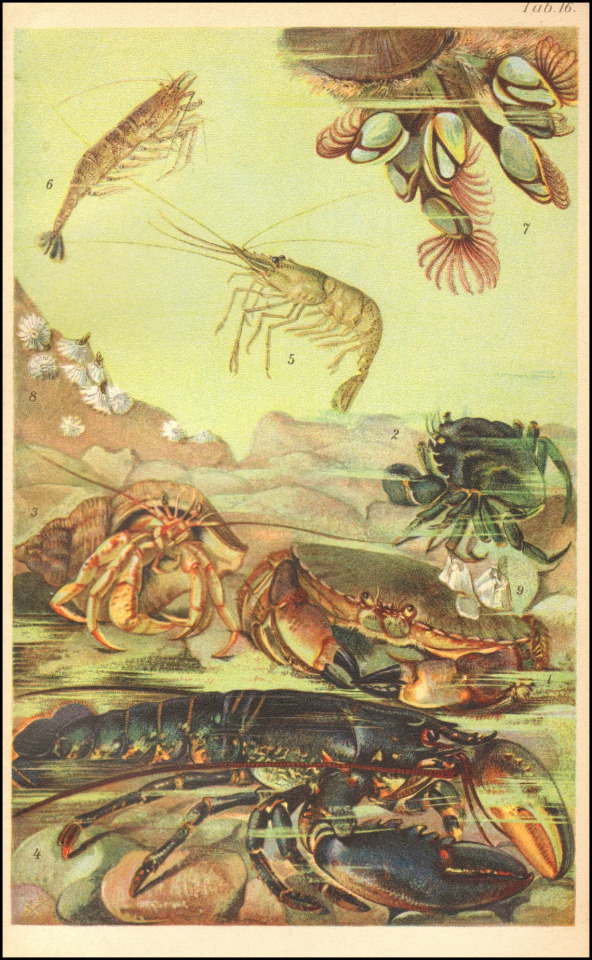
From Der Strandwanderer by Paul Kuckuck, 1905.
1.Edible Crab (Cancer pagurus), 2. Common Shore Crab (Carcinus maenas), 3. Common Hermit Crab (Pagurus Bernhardus), 4. European Lobster (Homarus vulgaris), 5. Baltic Prawn (Leander adspersus), 6. Brown Shrimp, Common Shrimp or Sand Shrimp (Crangon vulgaris), 7. Goose Barnacle (Lepas hilli), 8. Acorn Barnacle (Balanus balanoides), 9. Crenate Barnacle (Balanus crenatus).
154 notes
·
View notes
Text
STATUS OF TOONTOWN (MONTH 0, DAY 0)

Toontown Central
Starting point of the disease.
Public is unaware of the disease. Scientists and doctors are aware, and have brought the awareness to the disease to pet shop clerks. Believed to just affect Doodles.
Toony hijinks as usual.
Barnacle Boatyard
Disease has not spread here yet.
Unaware.
Toony hijinks as usual.
Ye Olde Toontowne
Disease has not spread here yet.
Unaware.
Toony hijinks as usual.
Note of interest: Poor immune systems are common here.
Daffodil Gardens
Disease has not spread here yet.
Unaware.
Toony hijinks as usual.
Sellbot HQ
Disease has not spread here yet.
Unaware?
Business as usual.
Mezzo Melodyland
Disease has not spread here yet.
Unaware.
Toony hijinks as usual.
Cashbot HQ
Disease has not spread here yet.
Unaware?
Business as usual.
The Brrrgh
Disease has not spread here yet.
Unaware.
Toony hijinks as usual.
Note of interest: Cold weather may lead to sluggish immune systems, but it also might cause victims of the infection to be less aggressive and more docile. Only time will tell.
Lawbot HQ
Disease has not spread here yet.
Unaware?
Business as usual.
Acorn Acres
Disease has not spread here yet.
Unaware.
Toony hijinks as usual.
Bossbot HQ
Disease has not spread here yet.
Unaware?
Business as usual.
Drowsy Dreamland
Disease has not spread here yet.
Unaware.
Toony hijinks as usual.
Boardbot HQ
Unknown.
NEXT
4 notes
·
View notes
Text
We’re getting French in this entry in my series where I cover the origins of every aquatic Pokémon not based on a fish because its gen VI time! For previous entries in this series see gen I part 1, gen I part 2, gen II, gen III, gen IV, and gen V. For the previous series where I cover all the fish Pokémon, see here. As before, starters and legendaries/mythicals will be saved for their own posts.
We only just started and I want to stop because it’s the Binacle line. By Arceus these things are hideous. That kind of fits though, because they’re based on goose barnacles, which aren’t exactly lookers themselves. I previously discussed barnacles here, but in short, they are filter-feeding crustaceans that incase themselves in hard shells that they will stay in for life. Goose barnacles differ from the more common acorn barnacles because they attach to rocks or other hard surfaces via a thick, muscular stalk.
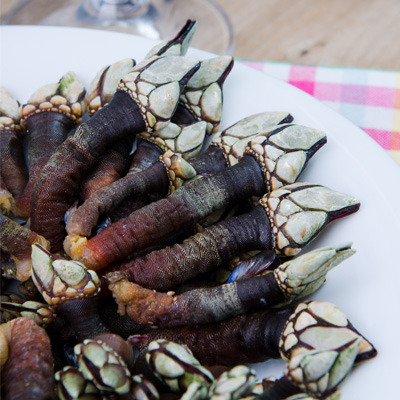
(image: goose barnacles)
Binacle’s shell is expanded to look like a hand with the face in it. Because two binnacle live together on the same rock they seem to be a case of intraspecific symbiosis, as opposed to the more common intraspecific symbiosis. Barbaracle is seven barnacles living together on two rocks, where they now take a humanoid shape. It retains the goose barnacle inspiration but now I think it also takes inspiration from mecha stories where multiple smaller mechs can combine into a larger one, such as in Voltron. In addition, the non-head barnacles are reduced to a single hand with an eye in the palm, which could reference the hamsa, a common symbol in North Africa and the Middle East.
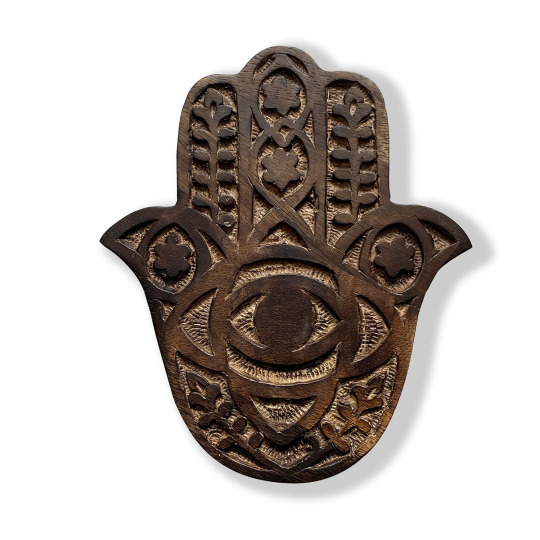
(image: a hamsa)
Clauncher and Clawitzer are based on pistol shrimp. These shrimp, members of the family Alpheidae, are known for their asymmetrical claws which they can use to create jets of water and a large snapping sound. The large claw has a chamber within it. When the claw is opened, water will rush into the chamber. The claw can then be snapped shut to pressurize the water enough to create a cavitation bubble and a light emission called sonoluminescence. The pressure forces the water out of the chamber with enough speed and pressure to kill small fish. The whole process takes less than a millisecond and produces a loud snapping sound. The shrimp use the snapping for communication and hunting. They will wait for fish to swim close, then shoot water at them to stun or kill them. Clauncher’s method of powering its water jets is different. It uses controlled release of internal gas. In addition, it uses the water jets to move around and hunt. It is said to shoot flying Pokémon out of the air with its water jets, probably a reference to how the archerfish will knock insects out of the air by spitting water at them. In both the real shrimp and the Pokémon, the claws will grow back if severed. There’s a lot more cool stuff about pistol shrimp I could go over but they aren’t really relevant to Clauncher and I think I’ll save hem for a future Wet Beast Wednesday post.
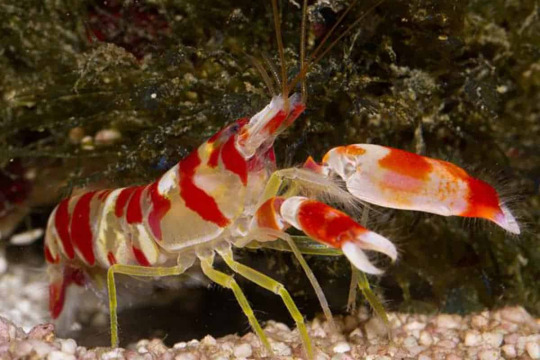
(image: a pistol shrimp)
I debated whether or not I should count the Goomy line as aquatic or not but I decided I will because it lives in swamps and will die if it dries out, so I will. Also I just can’t say no to Goomy. The line are based on slugs and a French legendary creature called Lou Carcolh that was said to be a slimy serpent or dragon with hairy tentacles and a large shell.
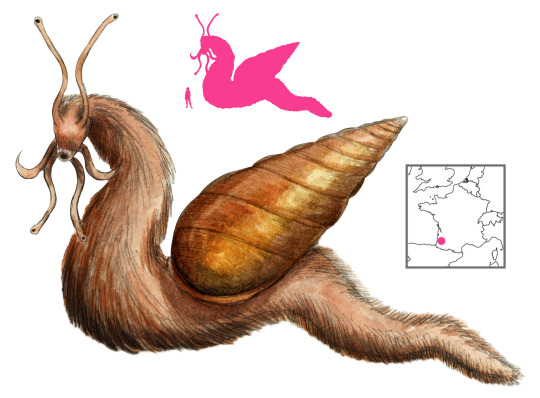
(image: a depiction of Lou Carcolh from the blog A Book of Creatures. Check it out, its cool)
Lou Carcolh was a malevolent creature that would grab people with its tentacles and drag them in to devour them. This line is much friendlier. They are likely a combination of land and sea slugs, likely nudibranchs due to their bright coloration. The horns they have are based on the eye stalks of the land slug and the tentacle-like rhinopores of the sea slug.

(image: a blue sea slug)
Like slugs, they are covered with a layer of slime that keeps them wet. Slugs must stay wet to survive and therefore prefers wetlands or shady areas, much like Goomy. Sliggoo is based on a semi-slug, which are intermediate gastropods between snails and slugs. They still have a shell, but it is too small for them to retract into it and in many species it is covered by the mantle, effectively making it an internal shell.
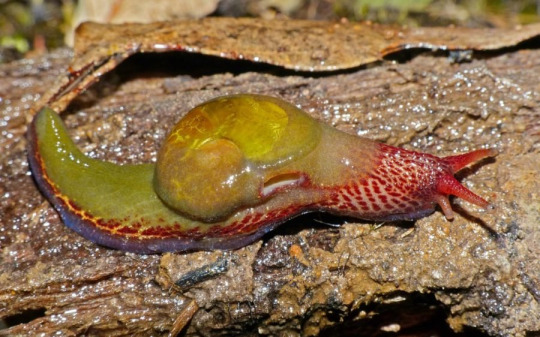
(image: a semi-slug)
In contrast to their modern counterparts, Hisuian Sliggoo and Goodra are snails. Their shells are metallic and come from living in mineral-rich waters. They are specifically based on the scaly-foot gastropod, which is a deep-sea snail which has a shell and part of its foot made of iron sulfides.
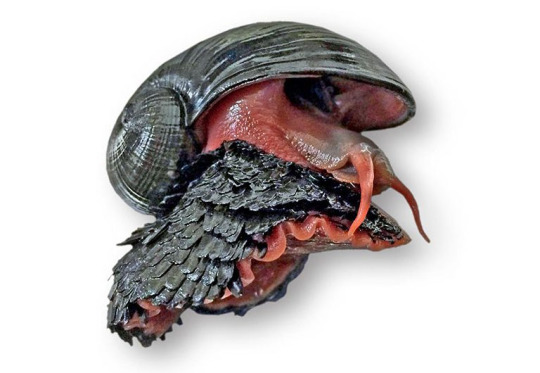
(image: the scaly-foot gastropod)
They are also likely based on shussebora, a yokai that is a trumpet shell snail that turned into a dragon after living for 1000 years each in the mountains, plains, and sea.
If you asked me if the Bergmite line was aquatic I would have said no. There is nothing in their descriptions or locations in the game that would imply they live in water. That is until Scarlet and Violet let them swim. It makes some sense, as they are based on icebergs, but it’s still a curveball after 3 generations of them living on mountains or in icy caves. But yeah, they’re icebergs, large chunks of ice that float freely in the water. Bergmite is based more specifically on the top part of the iceberg, which is much smaller than the part that remains underwater. Avalugg is based more on the submerged part of the iceberg. It is also based on a tortoise. It being compared to an aircraft carrier might reference Project Habakkuk, a plan in World War II to make an aircraft carrier out of pykrete, a combination of wood pulp and ice that is resistant to melting. They never actually did it, though.
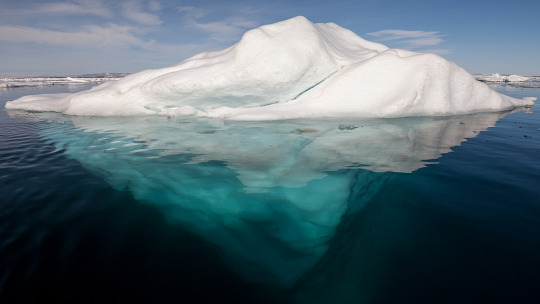
(image: an iceberg. No I'm not using the famous iceberg picture)
With that, gen VI comes to a close. Join me next time when we head to the tropics for gen VII.
#pokemon#pokemon lore#pokemon biology#biology#marine biology#zoology#animal facts#binacle#barbaracle#clauncher#clawitzer#goomy#sliggoo#goodra#bergmite#avalugg#acorn barnacle#barnacles#pistol shrimp#slug#sea slug#semi slug#scaly foot snail#lou carcolh#iceberg
6 notes
·
View notes
Text
Most people who have been at the coast have seen barnacles but very few people know much about them.
Well, let’s start off simple. Barnacles are crustaceans and are related to shrimp and crabs. Yeah, that’s right. Kind of hard to tell at a glance. They are very common and latch onto anything stationary and that is because they are sessile, which means they lack the ability to move themselves. Those shells they live in are actually attached with a cement gland that the barnacles have. Yes, literal, natural cement.
You know those little feelers that they stick out to eat? Well those are actually its legs that it uses to filter feed. These are called cirri and can actually help with its ‘breathing’. As they are filter feeders they generally tend to have a diet consisting of plankton and other microscopic organic materials.

When someone says barnacle, people usually think of the small rock-like acne on rocks and ships and while those are barnacles and certainly the most common, known as acorn barnacles.

However there are literally around a thousand species of barnacles. Such as the goose barnacle which have a long stalk.

These are actually edible and widely consumed, considered a delicacy in places such as Portugal and Spain known as percebes

It is also eaten in other places, like Morocco and historically consumed by the indigenous people of California.
While we are on goose barnacles, there was a historic misconception regarding these crustaceans and geese. This was when people did not know that birds migrated and thus had never seen them nest in Europe. It was actually believed that goose barnacles were the eggs or young of geese and that full grown geese would emerge from them. This is generally a medieval era idea and is attributed to the christian church.

Most barnacles, with few exceptions (the goose barnacle is actually an exception), are hermaphroditic, meaning they do if fact contain both sexual organs. Now if you will recall, barnacles are sessile and cannot move. As such, this does make sexual reproduction difficult. To combat this, barnacles have evolved in the most hilarious way.
Barnacles have extraordinarily long penises.
Barnacles actually have the largest penis to body size ratio in the entirety of the animal kingdom.
No I’m not joking.

Behold.
Anyways we’ve discussed that barnacles can only like to situate themselves on stationary or slow moving objects, like rocks or turtles. Well did you know there is a species that actually has chosen to live upon dolphins?
Yep! There is a genus that lives exclusively on the fins of porpoises!
In order to get a good grip though, they ‘bite’ into the skin and dig in to hold on leaving a star shaped scar when they die and fall off.
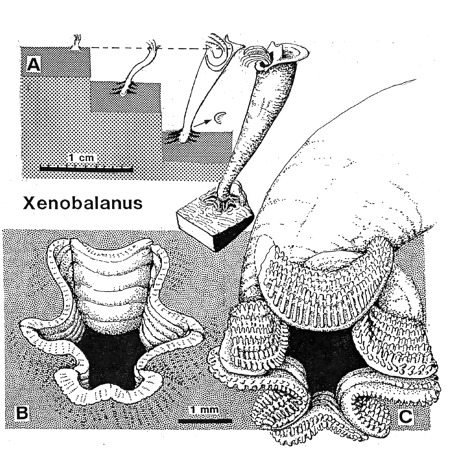


This next section is going to cover parasitism so just to make sure everyone is comfortable the paragraphs and pictures will be censored. Please look at your own discretion.
Did you know that barnacles can be parasites? Neither did I until yesterday. It’s true and there are quite a few that have taken to this life style. Rhizocephala is a parasitic barnacle that goes after its cousins, mainly crabs and lobsters. When a larva finds a female crab, it will pierce the crab’s egg sac with a needle-like appendage inject a clump of cells. Now that this has happened, the crabs fate is sealed. It will grow inside the crabs body, wrapping around its organs, muscles, and even eyes. It will continue growing to the point it will bulge out of the egg sac, changing the crab eggs to its own eggs. Another barnacle will come along, fertilize the eggs, and then the crab will climb atop a rock and release the larva, letting the process happen again. This barnacles anatomy has deviated to this very specific lifestyle that it in comparison to other barnacles it is almost unrecognizable.


But perhaps that wasn’t interesting enough for you. Well that’s fine because I have another one. This one has chosen its host to be that of the dogfish, a species of small, deep sea sharks. Most barnacles that hitch a ride generally do not harm the host but this one is an exception. This barnacle does not have a shell and thus will dig itself into the dogfish and take refuge under the skin, in the eyes, the spiracles, and mouth. Sometimes even in the sexual organs, effectively castrating the shark. It has roots that will anchor surprisingly deep into the dogfish and sap the nutrients from the surrounding tissue.
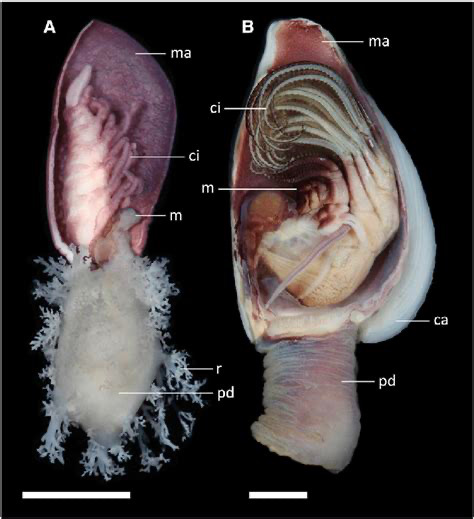
Anelasma squalicola anatomy vs a goose barnacle


September 2, 2022
Sources lost
#fish#fun facts#interesting facts#marine biology#marine life#sea creatures#fishes#animal facts#random facts#miscellaneous facts
10 notes
·
View notes
Note
Would you be interested in giving us a primer to barnacle reproduction? I have.... so many questions
There are different ways!

Acorn barnacles just use a very long penis (proportionately the longest of all animals) to fertilize whichever other acorn barnacles they can reach, each individual having all the necessary reproductive parts to fertilize and be fertilized. The swimming larvae then live as plankton for a brief period, but as they grow they follow the scent of their own species to ensure barnacles of the same type cluster together! If they really can’t find a patch in time or an ocean current carries them far away, they may just have to be a loner, but barnacles live so long - decades! - and are SO common, odds are pretty good that they’ll get the right neighboirs sooner or later.

But in most of the stalked barnacles, the large ones we can see are just the females. Larvae either settle nearby and molt into more females, or they enter the females and molt into tiny little males who live inside their mates for life! One female may have anywhere from one to hundreds of males inside! It's like a skyscraper full of office workers whose job is just to fuck the building!
These are just the two major barnacle categories though; there's a bunch of smaller groups, most of them parasites, with all sorts of life cycles.
2K notes
·
View notes
Note
which merformers don’t have the traditional “fish” half, and instead have something else (like lobster, squid, octopus, etc. half)?
I know it’s pretty common for people to headcannon Whirl as a lobster or something similar; something tough with claws; and I personally love that headcannon. I like the idea of him being part mantis shrimp.
Tailgate is a giant isopod. I do not take constructive criticism because I am right.
I’ve also really latched onto the idea of Minimus Ambus as some kind of acorn barnacle that is attached to a large whale that makes up the Ultra Magnus body and they have this weird symbitoic bond where they are separate entities but also one and the same.
#ask#anon#rantsinmuffin#transformers#merformers#transformers idw#mtmte#whirl#tailgate#ultra magnus#minimus ambus
98 notes
·
View notes
Note
Obae obae tell us about barnicles!! 👀 And their cursed lil leggies!
Barnicles!! Hmmm what do I know about barnicles... [thinking face]
I know I don't like them, that I do know. Their leggies are indeed cursed and looking at images of them for this ask was very not nice for me xD
So:
Barni-barnacles!
Barnacles are arthropods basically meaning they're invertebrates (no spiney-spine) with their bones on the outside rather than the inside (exoskeleton), with a segmented body and paired joints. They're related to lobsters and crabs via all the fancy scientific classification of animals aka: sub-class of Cirripedia where they're a sub-phylum of Crustacea (aka lobsters and crabs) and honestly, I enjoy knowing None Of This.
They're marine only (thank the gods), live in shallow and tidal waters and, depending on the type, either attach to anything that is substrate (basically any material that has some sort of layer to it that allows for grabby grabby attachment to happen; like rocks) or a symbiont like a whale or whatever which is can gain food from without having to do literally anything.
The most common kind of barnacles are acorn barnacles and I bet you'll recognise them because they're basically like the ones that show up on whales and boats all the damned time. Like. All the time.
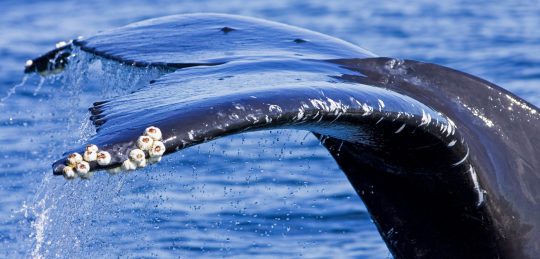
[image source: hakaimagazine]
Whale barnacles are a specific type of acorn barnacles that show up a heckin lot. They're usually seen on baleen whales and toothed whales (aka filter feeders or hunty boys: blue whale or orca is what I'm saying). They're actually used by scientists to study whale migration because they typically last on a whale for about a years, usually falling (is it falling? I don't think that's the right word but eh) off when the whales are doing their migration for baby making etc.

[image source: theethogram]
Acorn barnacles are the ones that look, well, actually kinda like a half-furled flower that doesn't know if it wants to open fully or not. This is because they grow six hard calcaeous plates around themselves for protection. With just enough space for their leggies to stick out and get food and water to their body lying on its tummy inside the carapace (hardened shell designed to protecc).
These sods don't have real hearts (heartless bastards) but a sinus alongside their throat which pumps blood via muscles in a similar manner. They also don't have gills and absord oxygen through their leggies.
Not creepy at all.
The ocean is fucking terrifying, I stand by this.
Anyway. Their leggies.
They have eight pairs of leggies which stick out and floof around the way they do like all feathery and shit, absorbing food and water particles (actual water, like hydration, not salty water). I don't think I want to know much more about their cursed leggies but... well.

[image source: seahistory]
*googles*
FUCKING WHY DO I HAVE TO LEARN ABOUT BARNACLE DICKS WHAT THE FUCK
OKAY NOPE
I'M DONE
I'M OUT THIS IS ALL YOU'RE GETTING
GOOD. FRICKIN. D A Y

#barnacles#education#marine life#marine biology#kat answers#kat replies#i never wanted to know about that last bit thanks
17 notes
·
View notes
Text
Blank Rune + Inner Shadow characters ranked by how much you can trust them to babysit your children
Mary Poppins is seething in envy:
- Avery; Hugger of children and literal angel. There’s no better option. No, you cannot change my mind. Your children will come back, happy, safe, and goth. They will form an unbreakable bond devils bargain of friendship
- Jademis: Smart, responsible, and nice. What better qualities for someone to take care of your kids? Not only is she capable, she actually cares about doing her job AND she will probably help your kids with their math homework also.
- Coal: Obviously an amazing choice. Not only does he have common sense and makes responsible choices, they are also fun! I can also see Coal really liking kids which makes him great for this.
- Caravel: On her own? God tier, no question. She takes her job incredibly seriously, gets attached to the kids immediately, and will defend them with her life. She will give them great food but also be responsible and also the kids will love her. Her taste in men is not her fault!
- Kester: He is literally a dad. The only reason why he’s ranked lowest in this tier is for slight overprotective tendencies, but you know what? That’s also a good thing. He would also LOVE tormenting your little ones with his dad jokes :)
- Idokras: This is a really protective person who is really enthusiastic and will do anything to keep them safe. Fun, but also strict enough to discipline them without being too harsh. The kids will have a great time!
Great tier:
- Acorn: Nice, smart, and full of great advice. Has kind of a hands-off approach which is why he’s not in the first tier, but overall a very solid choice.
- Fatima: Why is Fatima so low, you ask? She is across both stories the character with the most solid moral compass.She is responsible. She cares about their safety and wants them to be not traumatised. Perfect! But on her own, she is a bit awkward and “no fun” around kids. However!! If Oxyll joins her the pair of them instantly move up to God tier.
- Astrid: Astrid is amazing! I don’t even have anything negative to say that put her down, she’s all around great! No complaints! Just not so extraordinary as to put her any higher, but if you chose her as your babysitter, your kids will have fun and learn some wilderness skills.
- Soleya: Probably already makes mad cash babysitting. Smart, responsible, snarky. Shame she’s not the biggest fan of children.
- Sora: Sora is a literal angel. An actual disney princess. A precious flower who is soft and nice and will take good care of your children. She can be a bit of a pushover though!
- Rhy: Canonically a great babysitter. Fun, good with children, and just all around a charmer. Maybe not the great role model, but I’ll doubt you’ll have any complaints about him.
Decent enough:
- Oxyll: Also dad energy, but lesser efficiency than Kester. He’s more oblivious, and way less of a grip on the kids. He’s fine, but definitely not the best. Again, though, if you combine his powers with Fatima, they become god tier together.
- Skipio: Decent enough, responsible, and will do his damnest to keep your little ruffians out of trouble. He’s gonna be strict with them, too - which is also his downside. Your kids won’t want them back.
- Tave: He’s doing his best! He’s trying! Who knows, maybe he can work himself up the tier list. For now he’s getting an E for effort.
- Kain: A good boy! He’ll try to look out for them, but also, he’s very stupid, so emphasis on “try”
- Pan: I don’t think he’s really a “kids” kinda guy, and probably won’t know what to do with them. Still, he’ll try his best to keep them alive.
- Agnes: Honestly, considering the fact that she’s like, what? 14? This is hella impressive. A responsible girl! I’m very proud of her!
- June: Your kids will love her! She’ll let them ride on her motorcycle, stay up past 2 am, and let them eat as many cookies as they want!
Meh Tier
- Lyn Amara: Completely uninterested in your brats. I guess if you paid her, she’d pay attention though.
- Ash: Can be bribed into doing a good job, and depending on the kid might also grow attached enough to do it out of their own volution, but they might also not bother.
- Blake: He just wants to sit in his barrel, bro.
- Anianno: His honor demands him that he protects him from threats and he’ll definitely run head first at any large animal that tries to attack them.
- Tilly: Stimulate your childrens creativity! Teach them valuable life lessons! Repeat after me: Murder is okay :)
- Laure: I mean, she *might* sacrifice them to her death cult but I feel like she’d be responsible about it, yaknow?
- Wren: That’s a bit too much responsibility for our anxious little bean. They will try their best though!
You Might as well have left them alone
- Allen: This is the same as leaving them alone.
- Swift: Will probably get distracted & overhwlemed.
- Copper: Anxious chihuaha. Will cry.
- Jakob: Oh boy... probably not the greatest idea. I mean, he’ll try his best, but I can’t see this going too well. Maybe they can write sad poetry together?
- Finn: He does nothing for them and might accidentally... drop them.
- Elvin: He’s a baby but at least not actively completely irresponsible, and has some physical capabilities? He’s really dumb tho.
- Phillip: He will ditch them half way through the night to go fight and/or make out with his boyfriend
- Prion: Too busy staring at himself in the mirror.
- Lexa: Herself a baby and also has no concept of fear or danger. Don’t.
- Kyra: Might steal their arms... but eh, too small.
- Barnacle: Looking at his intentions and general vibe, it’s great! He is a soft cuddly sweetheart, who I can totally see liking children. He’s also a mess and a disaster and a huge pushover. Also, what do kids eat again? Here have some uhhhhhh...... leaves from outside?
Just.... Bad:
- Delta: Do you want your kids babysat by a cat?
- Liam: I mean... look at the job he did with June. He kept her alive and fed, I guess. So, congrats on achieving the bare minimum, but he’s definitely not getting any awards here. And theres you know, him being an evil shithead.
- Midas: As irresponsible as they get and also kind of a shithead. There’s a chance he might use your child as a football.
- Mikash: He is baby, dont give him this kind of responsibility!
- Arna + Firmin: The irresponsible children squad. Why would you let them babysit your irresponsible children??
- Dareios: Canonical child hater and overall horrible person. The only reason he’s not in the shit tier is that if you payed him, your children will survive. He will treat them horribly though.
KEEP THEM AWAY FROM THE BABIES
- Artemisia: Well she might kill the kids, but unlike the rest of the people in this tier, here your kids might have a chance of survival ‘cause Misi is not that interested in them and might ignore them and do something else instead.
- Rubin: trash garbage man who will misuse your kids as “squires” for his fucked up murder tournaments
- “Ethan”: Almost the absolutel worst option. He is a terrible influence. We remind the reader that when Caravel asked him to get something to eat for the kids, he brought chips and alcohol. Awful role model, and thats not even getting into the fact that he literally murdered the two children in his care. Might not even keep your kids alive if you pay him!
- Esca: No :(
4 notes
·
View notes
Text
east coast park | intertidal walk
a foreword:
when i was in primary school, i had multiple blogs cause i'd keep one for each interest: animals, travelling, crocheting (the list goes on.) but then arrived the age of instagram and proper journalling just kinda came to a stop :') since then i've been documenting all the things in my life - stuff that feel real big and cool and wonderful - in tiny squares with brief captions & stories that expire in a day. i don't know where the sudden urge to blog again sprung from, but i'm glad to have started on this.
now we begin :D
══════
23.08.21 - MONDAY
i remember waking up at 2.30am. not a great feeling. but my first intertidal walk was an early one - it started at 4am, and the anticipation was enough to get me going.
the stretch of beach we visited was the one near ECP carpark G. this area has a sandflat, seagrass, and a rocky wall nearby where lots of barnacles (and some crabs) were found. the tide tables had predicted something like 0.5m tides at 4am, which would drop to 0.1m at 5am - the lowest we'd be getting for the day.
i must say, the beach is gorgeous at night :') it's dark, undisturbed, tranquil. intertidal walks at this kind of ungodly timing have their perks - more animals are out and about, and with a UV flashlight you get to see some creatures glow :)
here are some of the stuff we found!

hmm...pink warty sea cucumber?

cake sand dollar

eight-armed luidia sea star (with 6 arms, yes)

painted sand star

(mostly buried) acorn worm processing sand out of its butt ^^

a hermit crab whose shell glowed under UV light :)



carpet anemone, fig snail (the purple covering on its shell is its flesh!), and black-lipped conch snail (this snail hops instead of crawling - woah.)
also saw a mantis shrimp, a baby pufferfish, some kind of burrowing eel, moon crabs, moon snails, sally-light-foots, brittle sea stars (so many), a sea urchin & a garlic bread (no, that's really what it's called) sea cucumber. we were hoping to glimpse some stingrays, stargazers & stonefish, but weren't lucky enough :')
in a blink, the sun was on its way up, and the tides were rolling back in. we washed up and left before 7am.
this was my first intertidal, so naturally i was awed by every single thing, even the sights that were supposedly common. i absolutely can't wait to go again - i've already made plans for my next walk :D
══════
some valuable things i learned:
- if it's your first time, have someone more experienced (with the geography of the area) / knowledgeable (about the creatures found there) guide you, so you can make the most out of your walk.
- don't wear wellingtons :'D it's game over when you wade into deeper water (or walk into a muddy area & get ur feet stuck.) wear close-fitting water shoes instead! make sure the soles are thick to prevent injury when traversing rocky shores / coral reefs.
- if you own a camera, bring it along. it's easier to snap pictures with your phone but the higher quality results are worth the extra trouble :')
- and if you're going at night, use a headlamp! really frees up your hands when you don't have to carry a torch.
1 note
·
View note
Text
Animal Crossing Fish - Explained #78
Brought to you by a marine biologist who’s been a couch potato since March...
CLICK HERE FOR THE AC FISH EXPLAINED MASTERPOST!
An Anon requested we do the Acorn Barnacle today, and that’s what we’re gonna do! Feel free to send me requests for our next AC Fish Explained! Like I said, I’m going random and could use some guidance on what animals you guys wanna see RIGHT NOW. I’m pretty glad we’re covering the Acorn Barnacle today since we just covered the Gazami Crab yesterday, and I’m gonna explain the connection in a minute.

Not that hard to get this guy...in fact, I don’t know about you, but I get this more than I get the Sea Grapes, which is ridiculous. So, I don’t think I need to explain how to catch this; literally go diving for five minutes.
Now, I’m no Charles Darwin, who is arguably still the #1 guy on barnacles before he got famous for suggesting natural selection, so it’s hard to say which species this is exactly. However, I have found a species that lives in the Indo-Pacific region of the world that looks like this (since I wasn’t too happy with the ACWiki’s species selection), and it’s Balanus trigonus:

By Auguste Le Roux - Own work, CC BY-SA 4.0, https://commons.wikimedia.org/w/index.php?curid=16884323
There are about 1000 species of barnacles in the world, and a lot of them really look the same. But I like this one - I got pretty excited by the morphologic similarities. Barnacles comes in two distinct flavors - stalked barnacles of Order: Pedunculata (think Binacle from Pokemon for a good, anime rep and which this definitely is not it) and the acorn barnacles of Order: Sessilia, who grow their shells right on the substrate they choose and are the most common kind of barnacle.
Now let me hit you with a fact that may blow your mind (since it did mine first time I learned this) - BARNACLES ARE CRUSTACEANS. That’s right - barnacles are related to crabs, like the Gazami crab from yesterday, lobsters, shrimps, etc. It’s hard to imagine, but the SubPhylum Crustacea is insanely diverse; thinking of only crabs and shrimp only scratches the surface of their diversity. Crustacea also includes a lot of things I’m not sure anyone would be familiar with, such as copepods, which are responsible for supporting most open water food chains in the oceans. (So, when I say “and friends” or “and relatives” after listing some familiar groups during any fish explained post, just know there are wild things out there ya probably never seen before and I just don’t have the time to cover them...you CAN, however, ask me to talk about them in an ask!).
Barnacles are probably the weirdest of the bunch, though (and trust me, that’s really saying something!). As my professor once put it, a barnacle is simply a silly little animal doing a head stand, kicking food into its mouth. And that’s not far from the truth. Acorn barnacles look like this when they are babies/larvae:

By ottolarink5 - http://planktonnet.awi.de/index.php?contenttype=image_details&itemid=16952#content, CC BY-SA 3.0, https://commons.wikimedia.org/w/index.php?curid=15524087
^That’s another species, but you get it. That’s the Nauplius stage - after just hatching, they float with the plankton, feeding and drifting along, molting about 5 times to grow larger. Eventually, they get to their Cyprid stage, which goes to find the best place to settle for the rest of its life. When they settle to the bottom, they settle head-first, because their cement glands are with the antennae. From then on, this little guy sits on his head using his feathery legs, called cirri, to catch planktonic prey. And, honestly, through this whole quarantine thing, I’ve done a lot of the same, minus the headstand.
And there you have it. Fascinating stuff, no?
#acorn barnacle#barnacle#crustaceans#marine biology#animal crossing#animal crossing new horizons#science in video games#animal crossing fish explained
9 notes
·
View notes
Photo

Common limpets (Patella balanus) and acorn barnacles (Vulgata balanoides).
Perranuthnoe Beach, Cornwall.
October 2019.
#barnacles#limpets#shells#wildlife#sea#coast#rocks#beach#cornwall#penzance to marazion#photography#agavex-photography#2019#canon eos 750d
9 notes
·
View notes
Photo

Lit by early-morning sunshine, the country lane ahead of me is enchanting.
One side is hedge, sweetly fragrant with white hawthorn blossom, and the other, old dry-stone wall, covered in emerald moss, moist and springy to the touch. Every now and then a wren darts in and out of the wall, looking for the perfect space to nest-build. On the ground, life is also starting to fizz. Fresh, tender shoots are emerging. The broad dark-green leaves of foxgloves spread themselves out and a pair of golden brimstone butterflies flutter around the mauve petals of common dog violets.
A misty valley in Borrowdale in the Lake District National Park
I stop for a moment and take a slow, deep breath –thankful to be back in Lake District National Park in North West England. It’s not just me that finds these landscapes so irresistible. Just over 114 kilometres from the thriving metropolis of Manchester, Lake District National Park, at around 2,362km2, is England’s largest, and more than 19 million people from all the over globe visit it annually. Just like me, visitors here are thrilled not just by the region’s spectacular scenery, but also by the rare creatures that live in its ancient oakwoods and the birds of prey that majestically soar the skies.
At springtime, the Lakes – as the area is better known – are especially magical, but it’s a place that beguiles at any time of the year. The otherworldly beauty of its windswept mountaintops, dramatic valleys criss-crossed with idyllic country lanes, sparkling waterfalls and deep, clear lakes often haunts me long after I return home.
Path from Stonethwaite to Rosthwaite
But of all the region’s valleys, it’s Borrowdale that casts the strongest spell on me. The picturesque area, which is situated in the green heart of the Lake District, is a haven for some of Britain’s most endangered flora and fauna. It’s where I am now, and the country lane I’m passing through is in the small village of Rosthwaite, some nine kilometres south of Keswick, the valley’s main town. This is the start of one of my favourite walks, which will take me through a myriad of arresting landscapes, from craggy fells to wild moors, from mountain tarns to oakwoods and, finally, from river valley to lakeshore. It’s a beautiful microcosm of all that the Lake District has to offer.
Borrowdale has thrilled me since childhood. A huge, wild, living playground, it was the perfect antidote to the grey shades and straight lines of school and suburbia. With my parents, brother and sister – as well as our dogs, a young and exuberant Irish wolfhound and a sensible, much older border collie – many happy summer days were spent here. In the meadows, we searched for daisies, buttercups and forget-me-nots for my flower press. And, in the woods, with socks and shoes off , we chased each other around huge oak trees, picking up acorns, throwing them for the dogs to catch, always saving a few to play wonky marbles with later. Then we’d find a clear stream to cool down and clean our hot little feet before starting our adventures all over again.
A ram near Watendlath
Of course, some four decades on since playing in the woods here, it’s sturdy boots, rather than bare feet, for me on my walk today. Now reaching the end of the lane, the view opens out and my climb up Great Crag, a steep fell-side, begins. The colours are different here – less verdant, more of an autumnal palette of faded-purple heather, burnt-brown bracken and grey rocky knolls. The colour of storm clouds. Now, some 200 metres above sea level, I turn around and marvel at the classic Lakes view. The valley floor – which in the summer months is ablaze with wildflowers – is strikingly green, intersected by the shimmer of the River Derwent that snakes through Borrowdale like a silver ribbon.
Turning back towards Great Crag, I follow the bridleway until a large whitewashed farmhouse and a small cluster of stone cottages come into view. This is the secluded picturesque hamlet of Watendlath that nestles on the shores of the tarn here. Apart from a mewing buzzard above me, enjoying the warm thermals, and a gaggle of honking barnacle geese, it’s incredibly quiet.
A blackbird on a wall near Stonethwaite
I take the path around the water’s edge, passing a flock of free-roaming sheep. Huge moss-covered oaks, with branches outstretched like arms and twigs pointing like fingers, cast their shadows. As the terrain turns to moorland, damp and peaty in places, I spy the yellow-green heads of bog myrtle popping above the scrub.
I scan the sky, hoping for a sight of another buzzard or maybe a falcon. It is empty. If I’d been standing here three or four years ago, though, I might have seen England’s last golden eagle, known as Eddie, filling the void. Up until the early 1800s, golden eagles – Britain’s second-largest bird of prey with a wingspan of around 1.8 metres – were numerous in the Lakes. But regarded as a threat to new-born lambs, the birds’ eyries (nests) were systemically destroyed by local sheep farmers – causing such a catastrophic decline in their numbers that golden eagles became locally extinct by the 1850s.
A pair of keen ramblers taking in the scenery
Since then, only very occasional pairs have settled in the Lakes. The last known couple were Eddie and his mate. He is believed to have died in 2016, some 12 years after the female. Fortunately, conservation measures have been put in place to encourage the return of these iconic birds. It’s hoped that chicks from successful populations in southern Scotland will be introduced here soon, turning the Lakes’ skies golden once again.
“Rare creatures live in its ancient oakwoods and birds of prey majestically soar the skies”
After two and half kilometres or so, I see Dock Tarn, one of the Lake District’s most beautiful mountain lakes. Circled by a small ring of tor-topped hills, covered in heather and bilberry, the tarn is aglow in the sunshine. On the surface, some yet-to-flower waterlilies shiver slightly as a light breeze brushes over them. Come high summer, orchids can be found among the grasses, and when the heather blooms, the tarn will reflect their hazy-purple hues, as if in perpetual twilight. It’s not just Dock Tarn that mesmerises. From here, I can also admire the summit of Glaramara and enjoy take-your-breath-away views of other mighty fells, including Haystacks, Honister and Pillar.
An arresting view of Derwentwater as seen from Catbells fell
The Lake District’s natural beauty has quickened people’s hearts for centuries. During the 1800s, some of England’s best-known Romantic poets and writers – including William and Dorothy Wordsworth, Samuel Coleridge, Thomas de Quincey and John Ruskin – were particularly enamoured. They celebrated the Lake District’s sublime beauty in their writings, often elevating the region to a heaven on earth, a wild Eden where man could achieve spiritual harmony with nature. William Wordsworth – probably the most famous Lakes poet, and author of the love song to the Lakes “I Wandered Lonely as a Cloud” – in his great autobiographical work The Prelude, published in 1850, described the region as a place where:
“The solid Mountains were as bright as clouds,
Grain-tinctured, drench’d in empyrean light;
And, in the meadows and the lower grounds,
Was all the sweetness of a common dawn,
Dews, vapours, and the melody of birds,
And Labourers going forth into the fields.”
A bridge in Rydal
Turning away from the “bright as clouds” view of the summits, I trace a stone-pitched track to the hanging oakwood at Lingy End and begin my descent. The climb down through the ancient wood is steep, and I’m kept company by the babbling Willygrass Gill stream. Originating at Dock Tarn, it cascades gently down the valley, eventually joining the River Derwent. Shoots of pungent wild garlic sprout between rocks and stones, joined by butter-yellow, star-shaped celandine flowers.
“A wonderland I first visited as a girl, I am lured back to the Lake District year after year”
I scan the trees for red squirrels, an endangered native species. Thanks to special conservation programmes, Borrowdale’s woods are one of the best places in England to spot this rare and elusive creature. I also look out for red and roe deer, but as with the squirrels, I am out of luck. I do, though, sight a great spotted woodpecker drilling into a tree, its distinctive black, white and red markings glimmering softly in the dappled light.
A cottage in Stonethwaite
Borrowdale’s oakwoods are the remnants of the temperate “rainforests” that once flourished on the western seaboard of Britain. They are the precious last habitat of disappearing moss and liverwort species and support an incredible variety of ferns and fungi, as well as butterflies, moths and other insects. That’s why Borrowdale’s oakwoods – over 500 hectares, home to more than a hundred bird species – are afforded the highest tier of protection available to habitats in Europe.
After an hour or so, the steepness of the slope eases and I’m back on level ground in the village of Stonethwaite, just next door to Rosthwaite. The wide walled and pretty path here runs parallel to the River Derwent, considered one of the purest rivers in Europe. Freshwater shrimp, lamprey and salmon thrive in its protected waters – even sleek-haired otters, once locally extinct, are back and can sometimes be spotted on the riverbanks with freshly caught fish in their paws.
Two people fishing at a reservoir in Watendlath
Back at Rosthwaite, I jump on a bus and less than 10 minutes later find myself on the shores of Derwentwater, one of the Lake District’s fi nest glacial lakes. In the afternoon light, the water reflects the shape of the mountains that circle it. A swan glides by, heading towards Lord’s Island, one of the lake’s four main islands. Once inhabited by the Earls of Derwentwater, the island is now a desirable residence for nesting birds and primroses only. During the winter months, the secluded bays and headlands here provide shelter for many wildfowl, including greylag geese, mallards and moorhens.
The Queen of the Lakes, as Derwentwater is also known, is the only place in England – apart from Bassenthwaite Lake about 16 kilometres further north – where vendace, a rare Arctic fi sh species dating back to the Ice Age, survives. Bassenthwaite Lake is also the place to see the Lake District’s only ospreys. These spectacular birds of prey, with a wingspan of almost 1.5 metres, returned to breed in 2001, after an absence of almost 150 years, and during the summer months can be seen diving for fish in Bassenthwaite’s pristine waters.
A river scene in Rydal
Two years ago, in 2017, the Lake District National Park was designated a Unesco World Heritage site. It became a National Park in 1951, one of the first established in Britain after the passing of the 1949 Act of Parliament. This year marks the 70th anniversary of that Act, without which the UK wouldn’t have its 15 glorious National Parks to explore and enjoy today.
That the Lake District is – and remains – a protected place is important to me. The Lake District is a gift. A green refuge where once-lost species have returned; a precious jewel of a place where I, and countless others before me, have felt at peace and been inspired, and found gentle reminders of a more natural past. A wonderland I first visited as a girl, I am lured back to the Lake District year after year. And each time I return, I fall back in love – bewitched all over again by the “empyrean light” of the Lakes that shines forever bright, captivates completely and re-wilds my heart.
SEE ALSO: Why Manchester is the UK’s next creative powerhouse
This article was originally published in the June 2019 issue of SilverKris magazine
The post Over vales and hills: The enchantment of the Lake District appeared first on SilverKris.
2 notes
·
View notes
Photo

Taken the same day as the previous post, this was a small common acorn barnacle (Semibalanus balanoides), or räfflad havstulpan, cluster I found on the beach. In Sweden, they occur on the west coast within the intertidal zones of rocky shores. They can survive in further zones, but competition and predation stop that from happening. They possess feathery cirri that are used for filter-feeding and oxygen extraction, but they felt too exposed to show them. #animal #animals #djur #wildlife #natur #naturliv #nature #invertebrate #invertebrates #arthropods #arthropod #kräftdjur #crustacean #crustaceans #acornbarnacle #acornbarnacles #havstulpaner #havstulpan #animalia #arthropoda #crustacea #thecostraca #balanomorpha #balanidae #semibalanus #semibalanusbalanoides #commonacornbarnacle #räffladhavstulpan (at Fiskebäckskil, Västra Götalands Län, Sweden) https://www.instagram.com/p/Cd1g6h1q406/?igshid=NGJjMDIxMWI=
#animal#animals#djur#wildlife#natur#naturliv#nature#invertebrate#invertebrates#arthropods#arthropod#kräftdjur#crustacean#crustaceans#acornbarnacle#acornbarnacles#havstulpaner#havstulpan#animalia#arthropoda#crustacea#thecostraca#balanomorpha#balanidae#semibalanus#semibalanusbalanoides#commonacornbarnacle#räffladhavstulpan
0 notes